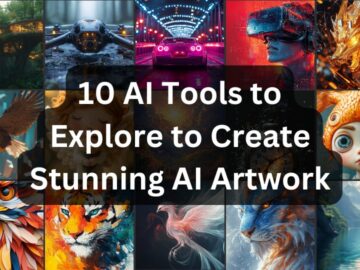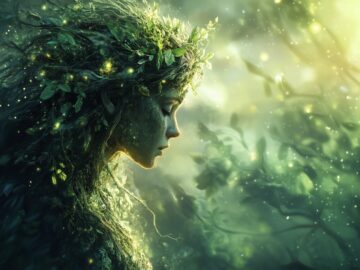
Art has always been a dynamic mix of creativity and innovation, changing along with the tools and technologies of its time. This has been the case throughout the history of the world of art. Today, the combination of artificial intelligence (AI) with digital art is a revolutionary step that ushers in a new era of creative expression.
Artificial intelligence’s foray into the realm of art started with straightforward algorithms that were able to generate fundamental patterns. Despite the fact that these early tests proved that machines have the potential to imitate artistic processes, their skills were nonetheless limited. Over the course of time, developments in machine learning and neural networks have changed the capabilities of artificial intelligence. We were first introduced to the surreal visual potential of artificial intelligence through early systems such as DeepDream. These algorithms transformed pictures into dream-like compositions that challenged our perspective of reality. Since that time, artificial intelligence art has been taken to incredible levels of sophistication by contemporary platforms such as DALL-E, MidJourney, and Stable Diffusion. These platforms have made it possible to create works that are on par with classic masterpieces.
Accessibility is the key to the beauty of artificial intelligence digital art. There is no longer a requirement for artists to have considerable experience in traditional techniques in order to create visually engaging works. Instead, they build comprehensive instructions that direct artificial intelligence models to generate works that range from hyper-realistic portraits to abstract compositions. Aspiring artists and hobbyists alike have been given the opportunity to express themselves in completely new ways as a result of the democratization of creativity, which has opened doors for new opportunities.
The use of artificial intelligence also makes it possible for artists to explore styles and topics that were previously restricted due to technological or physical limits. An artist, for instance, can merge parts of the baroque aesthetic with components of the futuristic aesthetic, so integrating historical art forms with contemporary invention in a seamless manner. A more profound appreciation for both conventional and digital art is cultivated as a result of this combination. Additionally, tools that are powered by artificial intelligence can be used to assist in the generation of iterative designs, which provides artists with the freedom to explore and swiftly refine their ideas.

Critics contend that the inclusion of artificial intelligence watered out the core of human innovation. Many artists, on the other hand, do not see artificial intelligence as a substitute but rather as a collaborator who can help them push the frontiers of their creativity and discover new ideas. The captivating nature of this era can be attributed to the dynamic interaction between human creativity and the accuracy of machines. Through the use of artificial intelligence, artists are able to concentrate on conceptual creativity while assigning activities that are repetitive or technical to the computer.
Additionally transformative are the commercial uses of artificial intelligence digital art. Designs for fashion, architecture, and interior design can all benefit from the usage of artificial intelligence by designers. The use of artificial intelligence to generate images for marketing campaigns allows brands to captivate people with imagery that is both dynamic and original. Even in the entertainment industry, artificial intelligence is helping to create immersive video game landscapes and animated films, which allow for the combination of artistic expression with cutting-edge technology.
Beyond the realm of aesthetics, artificial intelligence art brings up significant questions regarding authorship and intellectual property. Who is the owner of the rights to a composition that was made by artificial intelligence? The answers to these questions pose a challenge to the frameworks that are now in place, leading politicians and artists to reconsider the conventional conceptions of creativity and belonging.
As AI continues to advance, it is altering the ways in which we make art, recognize it, and place value on it. The purpose of this revolution is not limited to the advancement of technology; rather, it is to broaden the scope of creative possibilities for future generations. We are not only changing art by embracing the possibilities of artificial intelligence, but we are also redefining the very core of human expression. There is a tremendous amount of promise in the future of artificial intelligence digital art, which will provide an ever-expanding canvas for both experienced painters and interested beginners to explore.

